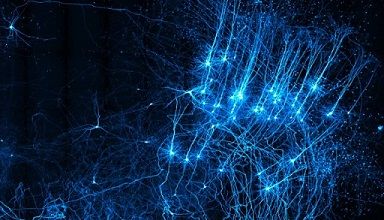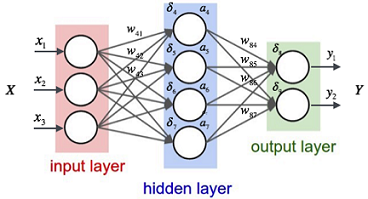
Artificial intelligence tries to discover and describe aspects of human intelligence in order to be simulated by machines. This area has been developed in recent years in a very strong way, where we can see its application in these fields: artificial vision, theorems demonstration, information processing expressed through human languages, among others.
Definitions of Neural Networks
- A new form of computing, inspired by biological models.
- A mathematical model composed of a large number of procedural elements organized in levels.
- Networks interconnected massively in parallel of simple elements (usually adaptive) and with hierarchical organization, which try to interact with the objects of the real world in the same way as the biological nervous system does.
Advantage
- Learning: Neural networks have the ability to learn to perform tasks based on a training or an initial experience.
- Self-organization: Neural networks create their own organization or representation of information inside which receives through a stage of learning.
- Fault Tolerance: Because a neural network stores information redundantly, it can still respond in an acceptable way, even if it suffers great damage.
- Flexibility: A neural network can handle unimportant changes in the input information.
- Real time: The structure of a neural network is parallel, so if they are implemented by computers or with special electronic devices, answers can be obtained in real time.
Structure of the Neural Networks

Classification
1. According to its Architecture:
They are divided into:
- Monolayer networks: It is composed of a layer of neurons which exchange signals with the outside and constitute at the same time the entry and exit of the system. The Hopfield network is the most representative of this network model.
- Multilayer Networks: Are those that are composed of one or more layers of neurons connected between them. Depending on the connections, they can be divided into:
- Networks with forward connections: Contain only connections between forward capable which implies that a layer could not have connection with one that receives signal before it.
- Networks with backward connections: They contain connections between capable backwards, therefore the information can return to previous layers.

Figure 1. Hopfield Network
https://steemitimages.com/DQmT3cHozox3R1ScoyBeJGAp38BE6Pg75w1qDX17fmCbEfF/tikz11.png
Figure 2. Multilayer Networks
2. According to its Learning:
- Supervised Learning: The network has the input and output patterns that are needed to obtain that input and according to them the weights of the synopsis will be modified in order to adjust the input to the output.
- Unsupervised Learning: This consists of not providing the output patterns to the network, but only the input ones and letting the same network qualify them based on common characteristics that the network finds in them.
- Hybrid Learning: In this the objective patterns are not provided, it is only said if the answer is correct or failed before an entry pattern.
Applications

Bibliographic References:
- http://www.it.uc3m.es/jvillena/irc/practicas/10-11/06mem.pdf
- https://www.frro.utn.edu.ar/repositorio/catedras/quimica/5_anio/orientadora1/monograias/matich-redesneuronales.pdf
- Book: Artificial Intelligence a modern approach, second edition. Stuart J. Russell & Peter Norvig.
Gratitude
I want to thank the people who have supported and helped me in my personal growth @hogarcosmico @bettino @rchirinos @annyclf @paolasophiat @luisrz28 @jesusrafaelmb @erika89 @rubenanez @natitips @hendrickjub